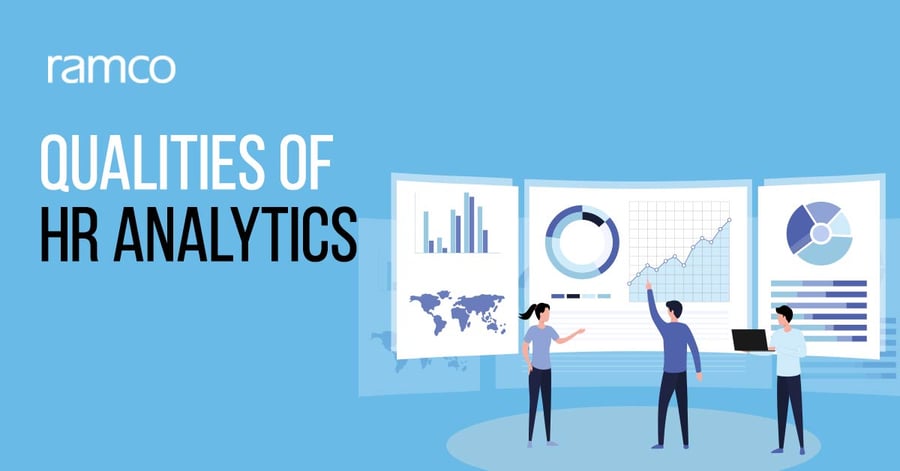HR data in any given context plays a vital role in helping organizations make decisions. It could be a minor decision such as deciding on the number of holidays or it could be a major one like predicting profit and loss information for the upcoming quarter in a financial year. If you carefully look, you will realize that everything is driven through HR data. However, access to the right HR data in today's world is more like an illusion than reality.
HR data, which helps in deriving HR analytics, plays a vital role in ensuring there are right people at the right place, and at the right time, doing the right job. Powerful and insightful HR analytics that global organizations provide must have some qualities. The following are the 5 important mantras that organizations must keep in mind while providing HR analytics:
- Uniformity of datasets
The question that pops in our mind, when we think of data uniformity is, “Can we have precisely uniform data?” Doesn’t it sound like something that exists only in an idealistic world?
Well! Achieving this might not be as tough as you think. While some of the aspects are specific to the regions or the employees themselves, a majority of the data points required for HR analytics can be uniform.
If an organization has its HR master database like jobs, positions, departments, business units, maintained centrally for all of the operating regions, it is easier to derive analytics even for corporate groups operating at many levels/regions. This has many benefits. Here’s one! If a specific business unit is performing well in India but is struggling to do well in another country, then factors such as work patterns, efficiency levels, environmental factors, and others can be compared to find out the problem. This can be done if the master database is maintained centrally. Benchmarking processes and adoption of new strategies (based on the outcome) would become much easier.
Payroll services, including online payroll services, are an integral part of HR data. They ensure that employees are compensated accurately and on time, which contributes to employee satisfaction and retention. Moreover, these services help in maintaining uniformity of datasets by providing accurate and up-to-date payroll information. This information can be used in HR analytics to make informed decisions.
In addition to the above, payroll services and online payroll services play a crucial role in managing the financial aspects of an organization. They help in streamlining the process of paying employees, filing taxes, and ensuring compliance with labor laws. By leveraging online payroll services, organizations can automate the payroll process, thereby reducing errors and saving time.
- Right amount of data
Most of the HR & Payroll service providers have fields that are made available to capture every aspect of employee's personal and professional information, in other words, a number of HR data points. However, how much of it will be useful to the organization during the employee's tenure? And how much of it will help in ensuring that the employee is engaged, motivated, and efficient?
The answer lies in having crucial but minimum data that can maximize the capabilities of time-driven and resource-driven analytics. For example, as a CHRO, I would love to know the tardiness of my employees across different age groups, during a specific time of the year. At the same time, I would not really be interested in getting granular data for each employee to draw strategic conclusions. In this case, the only information pertaining to an individual employee is age, and analytics is driven on summarized value rather than individual value. Payroll services can provide this crucial data in a timely and efficient manner.
- Defining scalable data models
Organizations even today focus on transactional data, but do they still run back and check excel sheets to arrive at time-based HR metrics? Hopefully, not. That brings us to this important question: Do organizations make mistakes due to data models that were built long ago but not scalable?
Scalable data models are the need of the hour. Most of the organizations have data scattered across segments, which usually causes hindrance in deriving time-based, data-driven analytics. Hence, it is important to model your legacy data wisely. Neither having denormalized views nor a 3N normalized transactional view (ideal for maintaining data structures for an Online Transaction Processing application) can be an effective way to model data. It is important to decide the state of normalization based on the usage. For example, HR master data can be in a normalized view but the employee data is usually preferred in a denormalized view. Online payroll services can help in maintaining this data in a structured and scalable manner.
- Data transformation
All the data required for analytics is available but due to the size of the dataset, the performance of the analytical report is poor. How can this be managed effectively?
Data transformation plays a vital role in visualizing analytics for the organization. Hence it is imperative that data transformations largely drive the performance of an analytical report. Data transformation could just be the conversion of a transactional value into a flat historical record for reference (wherein, a transactional value could be just saved in a denormalized table with values and not have any reference to master tables), or as complex as creating multiple flags based on the data input received in a denormalized table. Do note that most denormalized tables use flagging columns for easily filtering and retrieving data, which is similar to the indexing of tables. Extract, Transform, Load (ETL) is the heart of any successful analytical reporting system. Defining the right transformations and measures for the fields must be thought through, as changing the data transformation logic after years of using these reports could lead to a lot of cascading effects on the underlying dataset. Online payroll services can assist in this data transformation process, ensuring accurate and efficient reporting.
- Visualizations
Can I use any visualization that is appealing for the report?
While the first four mantras focus on the content, the last one focuses on the presentation. Visualization is the final layer of presenting data to the end-users. Hence, it is important to choose the right visualizations for the HR. Choosing a bar graph to denote the workforce diversity could be a bad idea when compared to plotting them on a map. Similarly, displaying a hike in base currency across different regions on a map as compared to a line and clustered chart can be disastrous, as we know the currency values play a vital role in this visualization.
Payroll systems and online payroll services can also benefit greatly from effective visualizations. For instance, a heat map could be used to visualize the distribution of payroll expenses across different departments or regions. This can provide valuable insights into the financial aspects of the organization and aid in strategic decision-making.
At Ramco, we design our dashboards and reports which are user-friendly, with great visualizations, besides sharing deep data-driven insights that will help in taking strategic decisions. Explore with us on what you can do for your reporting and analytics.


